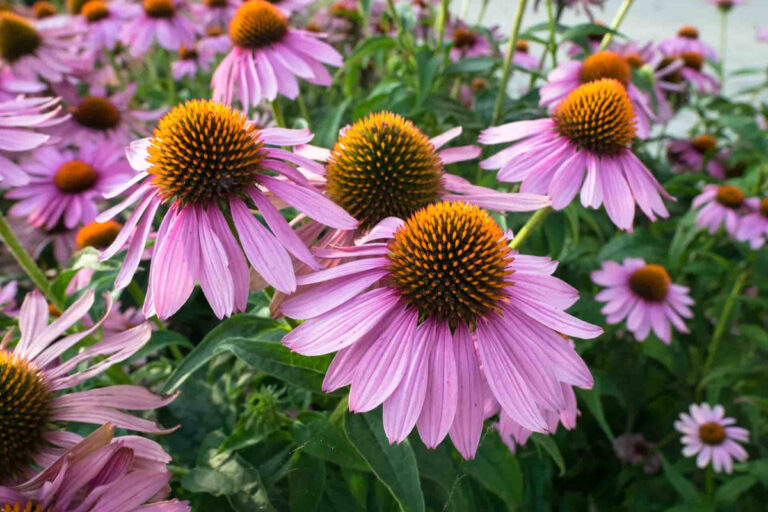We don’t have to look for the next big cure from the jungles in a remote place, where we have local plants with abundant healing properties. Echinacea is such a plant. In fact, it is the most researched plant in the world, and everyone has heard of its use in some capacity. Yet it is surprising to know how many ailments this wonder plant can actually treat. Read more.
Echinacea was first discovered in the United States and, until the transport of plants from the New World to Europe, grew only in the United States and a small part of southern Canada. The Native Americans had long used Echinacea, especially the variety that grows on the plains. angustifolia, to treat problems such as toothache, sore throat, cough and snake and insect bites. Later settlers and settlers learned of its use from the natives and, like JS Niderkorn, used it a 19ecentury physician noted, to correct “the deficiency of bodily fluids.”
Today, one of the most commonly mentioned aspects of Echinacea is its ability to stimulate leukocyte production and aid in phagocytosis. Simply put, this means that the herb helps create more pac-men that can drain and remove the waste in our bodies. Echinacea is used for a wide range of discomforts related to common seasonal insects and seasonal allergies. It helps activate the immune system and calm the histamine response.
With September just around the corner, the fall change of season just ahead of us, and the kids heading back to school (well, some of them), this time of change brings us greater challenges to our immune systems. As herb of the month we have chosen Echinacea, also known as coneflower, to share with our readers and customers.
Botany
Echinacea is a member of the Asteraceae or Daisy plant family and is native to central and eastern North America. The word Echinacea comes from the Greek word echinos, meaning hedgehog or sea urchin. The three most commonly used types are Echinacea angustifolia, Echinacea purpurea And Echinacea pallida.
History of plant use
The plant was used extensively by the various Native American tribes of North America. Doctors from the border area heard about its uses from the tribes and then started using it as medicine. In the nineteenth century it was widely used by John King and the other eclectic physicians in their medical practices. It began to fall out of use in the United States in the 1930s; however, its use in Europe and Germany has increased, and German researchers have extensively studied the plant and its constituents.
Growth, habitat and harvesting
Echinacea grows 2-4 feet tall and has a spiky, bulbous, dome-shaped center surrounded by a single layer of pink-purple tinged petals. It is found in open fields, prairies and roadsides, as well as in open woodlands, from Georgia to as far west as Colorado, north to Montana and Michigan, south to Arkansas and east to Ohio.
However, it is also grown as a perennial ornamental plant and can be found in gardens throughout North America. It prefers full sun and well-drained soil. The most common and easy to grow variety is E. purpurea and is grown commercially, mainly in Europe and North America.
The roots and aerial parts are used in herbal medicine and are usually harvested in the flowering phase. Different constituents are found in different species, parts of the plant used, at different stages of the growing season and in different extraction methods. Most discussed are caffeic acid esters, polysaccharides, alkylamides and glycoproteins.
Modern and historical uses of plants
Nowadays the herb is most commonly used to support the functioning of the immune system. This supportive role appears to support the body’s healthy response to external environmental challenges. This makes the body better equipped to deal with common seasonal discomforts and optimize recovery to a state of equilibrium.
It also supports the healthy function of the respiratory tract. It can soothe irritation and strengthen the tissue, so there is less moisture loss. It supports the body’s ability to break down stagnant mucus in the airways, allowing for better mucus clearance.
The effective properties of the herb are pungent, salty, cool, dry and sedative. In the traditional Chinese medical system, the herb is said to enter the energy meridians of the lungs, colon and stomach.
Some Native American tribes chewed the root to soothe irritated gums and teeth. In addition, they bathed the skin with the juice of Echinacea to soothe a wound, burn or irritated skin.
Finally, it was also historically used for snakebites due to its ability to strengthen and support tissue integrity and healthy fluid balance.
The plant is often used in the form of tincture, extract or capsule and also as a tea. Although it can be used alone, you will often find this herb in an immune support formula or a blended tea.
WishGarden’s formulas containing Echinacea
Here at WishGarden we use both E. aungustifolia And E. purpurea types, and these can be found in our Kick-Ass Immune Activator, Kick-Ass Biotic, Daily Immune Builder, Kick-Ass Allergy Seasonal Rescue, as well as in our Daily Immune Builder For Kids, Kick-It Allergy Seasonal Rescue For Kids, Kick -It Immune Activator For Kids, Kick-It Biotic Immune Hero For Kids and our Ear-Be-Well combo pack.
For educational purposes only. This information has not been evaluated by the Food and Drug Administration. This information is not intended to diagnose, treat, cure, or prevent any disease, or to sell any product.
Read further

